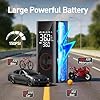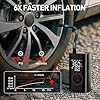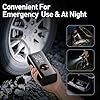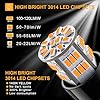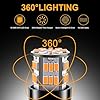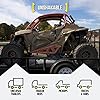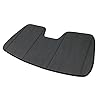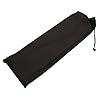Table of Contents
For many dogs, the jingle of car keys is a sound of pure excitement, a prelude to an adventure. But have you ever stopped to wonder what exactly makes this experience so thrilling for our canine companions? The question at the heart of this article is a fascinating one: are car rides mental stimulation for dogs? The answer is a resounding yes. Far from being just a mode of transportation, a car ride is a dynamic and enriching experience that provides a full-scale workout for your dog’s brain, engaging their primary senses and satisfying deep-rooted instincts in ways a simple walk around the block often cannot.
This comprehensive guide will delve into the science and psychology behind why the car is such a powerful source of canine enrichment. We will explore how a simple journey provides sensory input, promotes bonding, and can even help build a more confident and resilient dog. We will also provide practical, step-by-step advice on how to maximize the benefits while ensuring every trip is as safe as it is stimulating.
Understanding the Canine Brain: Why Mental Stimulation is Non-Negotiable
Before we dive into the specifics of car rides, it’s crucial to understand why mental stimulation is a core component of a dog’s well-being. A mentally under-stimulated dog is often a bored dog, and boredom can quickly manifest into undesirable behaviors such as excessive barking, chewing, digging, or anxiety .
Mental enrichment provides an outlet for your dog’s natural energy and curiosity. It challenges their brain, reduces stress, and can even tire them out more effectively than physical exercise alone. Engaging a dog’s mind is just as important as exercising their body, leading to a calmer, happier, and more balanced pet.
The Sensory Superhighway: How Car Rides Provide Mental Stimulation for Dogs
A car ride transforms your dog’s static world into a moving tapestry of stimuli. Let’s break down exactly how this journey engages each of their powerful senses.
The Olfactory Odyssey: A World of Scents
A dog’s most dominant sense is smell. While humans have about 5-6 million scent receptors, dogs possess a staggering 200 million to 300 million . For them, a car ride with the window cracked open is not just a breeze; it’s an overwhelming and exhilarating flood of information.
- A Moving Scent Dictionary: Every passing moment brings a new olfactory story—the smell of a distant restaurant, the scent of another dog on a sidewalk, the aroma of freshly cut grass, or the intriguing trace of a wild animal. This constant, novel stream of smells provides immense mental stimulation and environmental enrichment .
- Calming Effects: Intentional olfactory enrichment can be powerful. Some owners find that using a single drop of a calming scent like lavender in a car vent clip can help occupy and soothe a dog during a journey .
The Visual Carnival: A Moving Picture Show
While a dog’s eyesight is different from ours, they are exceptionally good at detecting motion. The ever-changing scenery from a car window—passing cars, people, trees, and buildings—creates a captivating visual feed that keeps their brain active and attentive .
This “sightseeing” is a passive form of enrichment. Your dog doesn’t have to do anything; the world simply unfolds before them, providing a continuous, low-effort mental workout that fights boredom and satisfies their curiosity about their environment .
The Auditory Adventure: Tuning into New Frequencies
The sounds of a car ride are as varied as the sights. The hum of the engine, the whoosh of passing vehicles, the occasional honk of a horn, and the murmur of the city all contribute to a rich auditory landscape. This exposure to novel sounds, when not overwhelming, helps with socialization and acclimatization to different environments.
Furthermore, you can use sound proactively to enhance the experience. Studies have shown that music, particularly classical music in the 50-60 beats per minute range, can help reduce stress and promote relaxation in dogs . Playing a dedicated dog calming playlist or podcast can transform a potentially anxious ride into a serene one.
Tapping into Innate Instincts
The mental stimulation from car rides goes beyond the senses and taps into fundamental canine instincts.
- The Pack Mentality: Dogs are social animals that form strong family bonds with their human companions. A car ride is a shared journey, reinforcing their sense of belonging and security. This quality time strengthens your bond and makes them feel like they are on a joint mission with their pack .
- The Hunting Drive: The movement and speed of a car can awaken a dog’s innate prey drive. The sensation of moving together at speed can feel like a simulated “chase,” which is naturally euphoric for many dogs, especially those bred for hunting .
- The Explorer’s Mindset: Dogs have a natural inclination to explore their territory and beyond. Car rides satisfy this wanderlust, allowing them to safely venture into new neighborhoods, landscapes, and territories, gathering information and overcoming the fear of the unknown .
The Clear Benefits: What You Gain from a Mentally Stimulated Dog
Providing this kind of enrichment through car rides yields tangible benefits for both you and your pet.
- Reduced Boredom and Destructive Behaviors: A mentally tired dog is a well-behaved dog. The enrichment from a car ride can leave them content and calm for hours afterward.
- Improved Confidence and Socialization: Exposure to new environments, sights, and sounds in the safe confines of the car helps dogs become more adaptable and well-socialized, reducing fear and anxiety in novel situations .
- Strengthened Human-Canine Bond: Sharing adventures and new experiences builds trust and deepens your connection. The car becomes a shared space for positive, quality time .
- A Calmer, Happier Pet: The combination of mental exertion and sensory satisfaction contributes significantly to your dog’s overall happiness and emotional well-being.
Table: The Mental Gym – How Car Rides Stimulate Your Dog’s Senses
| Sense | Stimulation Provided | Mental Benefit |
|---|---|---|
| Smell | A constantly changing flood of novel scents from the open window. | Taps into primary sense; provides immense olfactory enrichment and information gathering. |
| Sight | A moving visual feed of passing people, animals, vehicles, and landscapes. | Fights boredom, keeps the brain active and attentive to motion. |
| Hearing | Exposure to a variety of new sounds (traffic, city life, nature). | Aids in desensitization and acclimation to different environments. |
| Touch | The feeling of the car’s motion, vibrations, and air flow. | Provides novel physical sensations that keep the brain engaged. |
Transforming the Trip: Practical Strategies for Maximum Mental Stimulation
Knowing the “why” is only half the battle. Here’s how you can curate car rides to be a masterclass in canine enrichment.
For the Anxious or Novice Dog: Building Positive Associations
Not all dogs are born joyriders. For some, car rides are associated with fear or nausea. The key is gradual desensitization and positive reinforcement .
- Start Stationary: Let your dog explore the parked car without the engine running. Offer high-value treats and praise just for being in the space.
- Add Mild Stimuli: Sit in the car with your dog, turn on the engine, but don’t drive. Practice this for short periods, continuing to offer treats and calm reassurance.
- Begin with Mini-Trips: Start with very short drives (just around the block) that end in a positive experience—a game in the yard, a favorite treat, or a sniffing session in a new spot. The goal is to ensure the destination is fun, breaking the association that the car only leads to the vet .
- Go to “Fun” Destinations: Make most car rides an adventure. Drive to a hiking trail, a pet-friendly store, a park, or a friend’s house. This builds a powerful positive association with the car itself .
For the Seasoned Traveler: Advanced Enrichment on the Go
If your dog is already a car-riding pro, you can elevate the enrichment.
- Plan a “Sniff Detour”: Instead of sticking to the highway, take a five-minute detour down a quiet country or suburban road. Roll the windows down safely and let your dog’s nose work overtime processing the new scent landscape .
- Incorporate Enriching Pit Stops: Use apps like AllTrails to find a dog-friendly hike or park along your route. A 30-60 minute break for a walk and exploration turns a monotonous drive into a multi-part adventure .
- Turn Breaks into Games: At a rest stop, you can toss a handful of kibble into a safe, pesticide-free grassy area and let your dog use her nose to “seek” it out. This foraging game is a fantastic burst of mental stimulation .
- Use Calming Aids: For dogs who are overstimulated or still a bit anxious, consider a lick mat spread with a moist, sticky treat. The act of licking is naturally soothing and releases endorphins that help dogs relax .
Table: Troubleshooting Common Car Ride Challenges
The Non-Negotiable Foundation: Safety First
For car rides to be truly enriching, they must be safe. An unrestrained dog is a danger to themselves, to you, and to other passengers.
- Proper Restraint is Paramount: The safest way for your dog to travel is in a crash-tested crate or a certified dog seatbelt harness that is securely anchored to the vehicle’s seat belt system . This prevents them from becoming a projectile during a sudden stop or accident.
- The Back Seat is Best: Always have your dog ride in the back seat. This protects them from injury in the event of a front-seat airbag deployment .
- Practice Window Safety: While dogs love sticking their heads out the window, it’s dangerous. Flying debris can injure their eyes, and there is a risk of them falling or jumping out. A safely cracked window for smells is sufficient .
- Never Leave Your Dog in a Parked Car: The internal temperature of a car can soar to deadly levels in minutes, even on a mild day. This is a non-negotiable rule for your pet’s safety .
- Proper Identification: Ensure your dog is wearing a secure collar with up-to-date ID tags and has a registered microchip. In the unlikely event they get separated from you during travel, this dramatically increases the chance of a safe return .
Conclusion: Your Car, Your Dog’s Mobile Enrichment Center
So, are car rides mental stimulation for dogs? As we have explored, they are far more than that. A car ride is a multi-sensory adventure, a cognitive workout, and a bonding expedition all rolled into one. It satisfies your dog’s innate curiosity and drives in a way that few other daily activities can. By understanding the “why” and implementing the “how,” you can transform a simple errand into a cornerstone of your dog’s enrichment regimen.
With a focus on safety, positive associations, and a little creativity, you can unlock the full potential of every journey. So the next time you grab your keys, look at your eager companion and see not just a passenger, but a co-pilot ready to explore the vast, stimulating world you are about to drive through together.
Summary and Key Takeaways
- Mental Stimulation is Key: Car rides provide powerful mental enrichment by engaging a dog’s primary senses of smell, sight, and hearing, which is crucial for preventing boredom and destructive behaviors.
- A Sensory Powerhouse: The ever-changing environment during a car ride offers a flood of novel scents, sights, and sounds, providing a continuous and engaging mental workout for your dog.
- Tapping into Instinct: The experience satisfies deep-rooted canine instincts like pack bonding, exploration, and the prey drive.
- Safety is Foundational: For the experience to be positive, it must be safe. Always use a crash-tested harness or crate, have your dog ride in the back seat, and never leave them unattended in a parked vehicle.
- Build Positive Associations: For anxious dogs, use gradual desensitization and ensure most car trips lead to fun destinations, creating a positive link between the car and enjoyable experiences.
- Enhance the Journey: Use tools like calming music, enriching pit stops, and sniffing games to maximize the mental benefits for your dog, turning the journey itself into the adventure.
